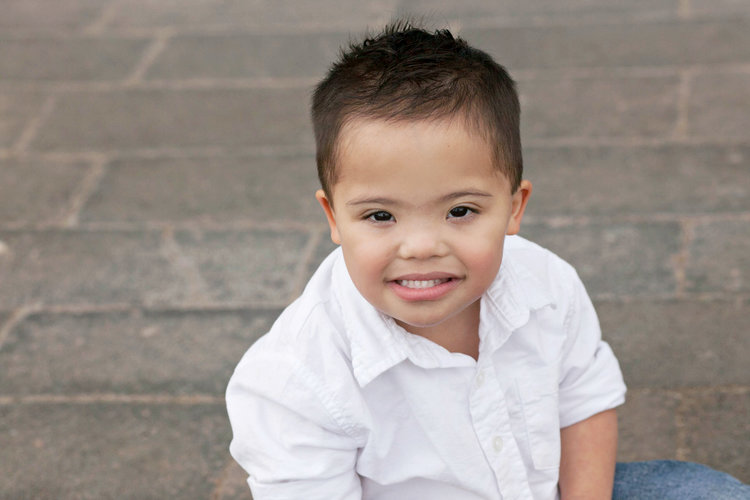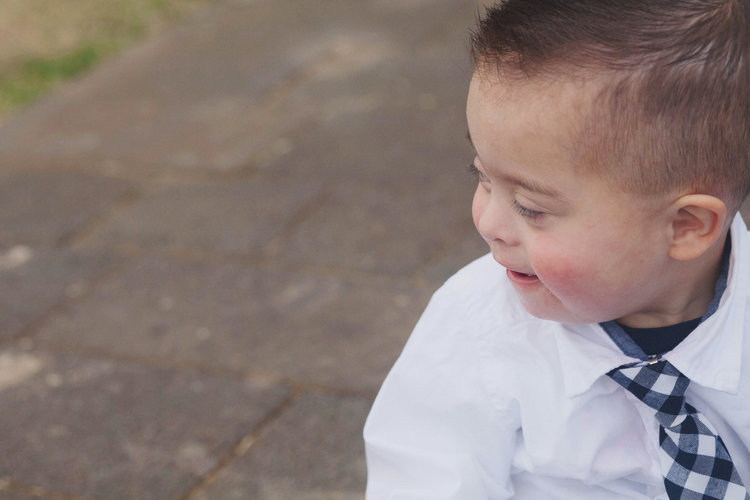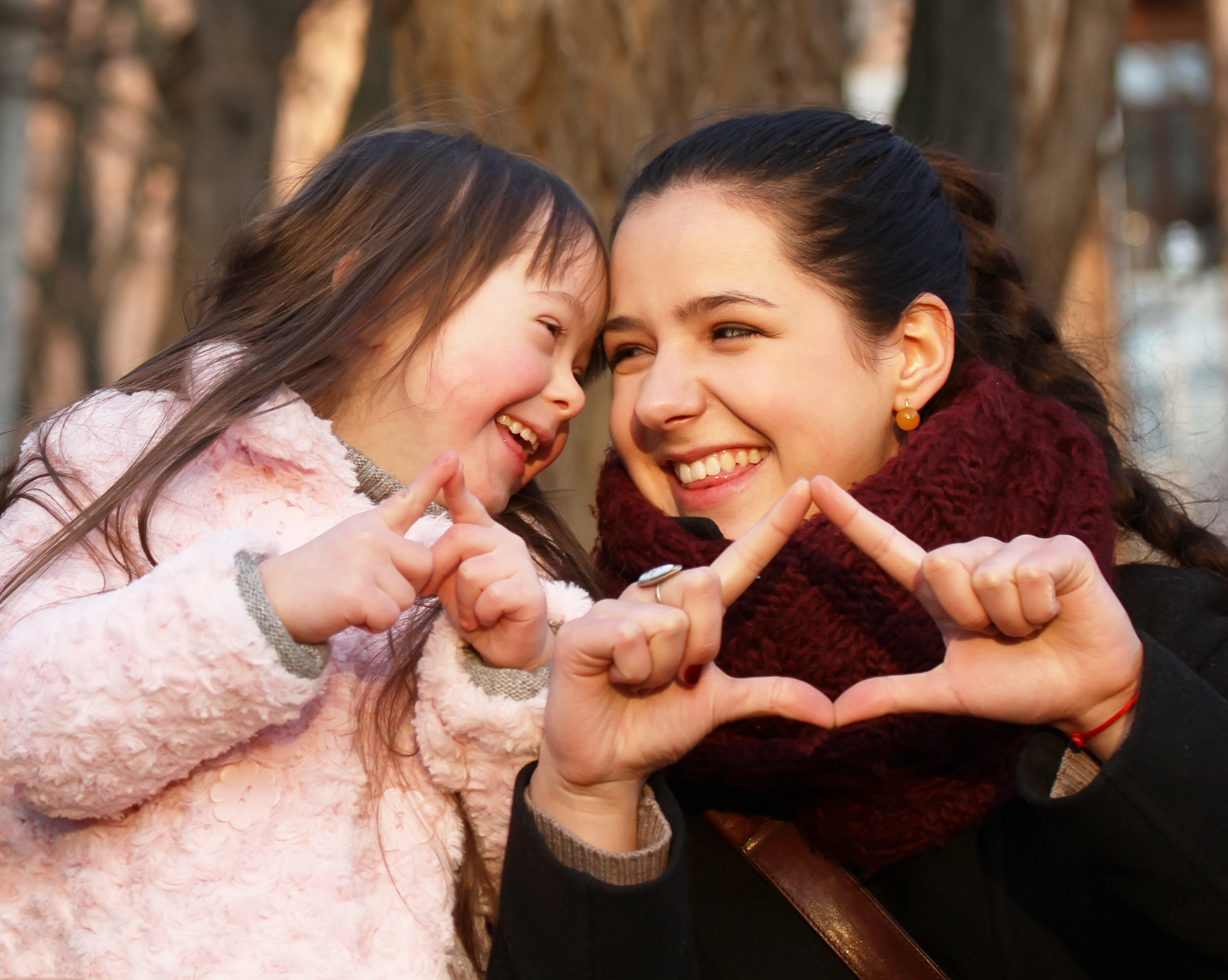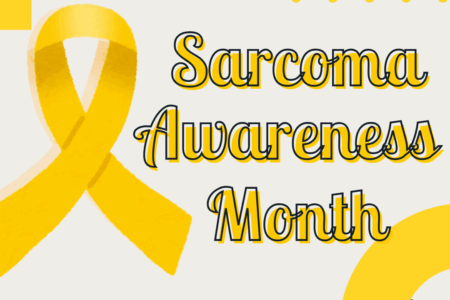
Share On Social!
Down syndrome affects all race and ethnicity groups, with 1 in 700 U.S. babies born with Down syndrome every year and 1 in 1,200 children and adults currently living with this condition, according to federal data.
But did you know that Latinos have an unusually higher risk for Down syndrome? For instance, in Texas, Latinos had the highest number of Down Syndrome births when compared to other race/ethnicity groups.
October is Down Syndrome Awareness month. This is a good time to discuss Down syndrome knowledge, disparities, and support for Latino families.
What Is the Risk of Down Syndrome for Latinos?
Down syndrome is a genetic disorder where a person has three copies of chromosome 21 instead of two.
However, the exact cause is unknown.
 “In a process called non-disjunction, the two copies of chromosome 21 fail to separate during the formation of the egg, resulting in an egg with two copies of the chromosome,” according to the Global Down Syndrome Association. “When this egg is fertilized, the resulting baby ends up with three copies of chromosome 21 in each of its cells.”
“In a process called non-disjunction, the two copies of chromosome 21 fail to separate during the formation of the egg, resulting in an egg with two copies of the chromosome,” according to the Global Down Syndrome Association. “When this egg is fertilized, the resulting baby ends up with three copies of chromosome 21 in each of its cells.”
Risk factors include advancing maternal age, and a family history of chromosomal rearrangements.
For example, a 30-year-old woman has a 1 in 1,000 chance of having a child with Down syndrome. By 40, the risk rises to about 1 in 100.
Advanced maternal age has a greater impact on the risk of Down syndrome for African Americans and, particularly, Mexican-American women than for non-Latina White women, according to a 2015 study.
“This difference in impact might reflect lower availability or use of prenatal diagnostic technologies,” according to the researchers.
What Happens After a Down Syndrome Diagnosis?
Parents who get a Down Syndrome diagnosis during pregnancy must begin to prepare emotionally, mentally and economically.
About 1 in 3 parents choose to continue with their pregnancy, according to one U.S. study.
For those who continue, complications can arise for children with Down syndrome. Complications include heart defects, blood disorders, leukemia, autoimmune conditions, thyroid disorders, skeletal problems, and digestive problems. Also, children with Down syndrome often need therapy to help them to live their best life. Therapies include speech, physical, and occupational. These can cost thousands of dollars a year.
On the other hand, the life expectancy of people with Down syndrome has increased from 25 in the 1980s to 60 years today. Researchers attribute this growth to early identification and treatment of related congenital heart defects, and a better lifestyle, education, and health.
 Also, many Latinos with Down syndrome have flourished in their fields, according to Latin Post:
Also, many Latinos with Down syndrome have flourished in their fields, according to Latin Post:
- Valentina Guerrero, world-wide fashion model
- In 2013, Angela Bachiller became the first person with Down syndrome to be elected as a councilwoman.
- Ayelén Barreiro was chosen to participate as a dancer on one of the most popular dance shows in South America.
- María José carried the presidential sash in the official appointment of Ecuadorian President, Rafael Correa.
- Spanish actor Pablo Pineda earned a bachelor’s degree in educational psychology and has gone on to be a writer, speaker, and actor.
What Journey Do Latinos Face with Down Syndrome?
Many Latino families suffer a big lack of access to support for economic success and quality healthcare. This makes it harder for Latino children to achieve academically, socially, and physically, according to a Salud America! research review.
Thus, Latino families often lack support for children with Down syndrome.
Latinos with Down syndrome are less encouraged to take responsibility for their health, personal care, and social lives. Besides, they are not able to make their healthcare transition and to reach independence. This is due to Latino families’ cultural over-protection for any family member who has a disability.
In many Latino homes, they might even hide disabilities from others for years.
Latino families also tend not to ask for help. Also, Latino people reorganize their lives so that the family member with a disability is taken care of.
Latinos with Down syndrome and other disabilities face other barriers, too, caused by the language barrier, networking, collaboration, advocacy, immigration status, and communication. These disparities block Latino access to government services and thwart their rights.
How Can We Support Latinos with Down Syndrome?
To improve life for Latinos with disabilities and their families, here are some tips:
- Implement educational programs that can provide information to families about programs and opportunities available.
- Provide professional bilingual health care workers with some knowledge about the cultural and religious values of Latino communities.
- Provide vocational rehabilitation services for Latinos, such as independent living.
- Create a bilingual network of jobs for individuals with disabilities.
- DS-Connect®. The Down Syndrome Registry organization is dedicated to studying this condition. The registry conducts online surveys to collect information about people with Down syndrome globally. Researchers then can use that data to develop medical and treatment studies.
- In addition, people with Down Syndrome and their families can participate in clinical, medication and treatment studies, surveys, and so on.
Groups also exist to help Latino parents.
For example, the Rio Grande Down Syndrome Network is a New Mexico based nonprofit organization that empowers individuals with Down syndrome and their families through advocacy, education, and support.
Members provide information, support, and activities for one another. That includes playdates, large group gatherings, and fundraisers.
“Receiving a Down Syndrome diagnosis can present many different emotions and to some, it may feel overwhelming. There are many different ways to process the diagnosis, all of which are completely okay. What we want you to know is that you are not alone,” according to the network website. “There are over 300 families that are part of the Rio Grande Down Syndrome Network. We would be honored to walk alongside you in this new journey! There are many resources and families who can support and welcome you to the family!”
Editor’s Note: Photos via the Rio Grande Down Syndrome Network.
Explore More:
AccessBy The Numbers
142
Percent
Expected rise in Latino cancer cases in coming years



